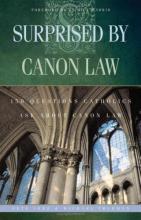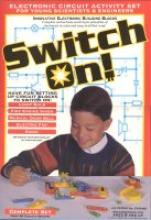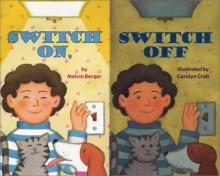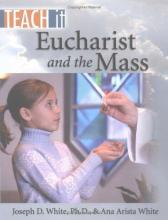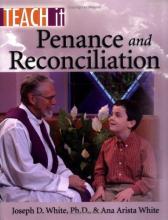No name
Subtraction Songs
Audio Memory offers math audio tapes and CDs for practicing "Math Facts" in Addition, Subtraction and Multiplication. (Sold separately from each other). These are Math drills set to music (of the synthesized variety). Although these make for an easy memorization aid, I found the songs almost unbearably sappy. (My children did like them though.)
Sun Slower, Sun Faster
During the course of their visit to Welston, the children make frequent visits to the past - each one a little further back in history. Although each visit is rather short, the details of the story are quite interesting - the kinds of names used, the way people speak and dress, and other historical details about specific places and events. On the whole, it is a fun and suspenseful adventure story that whets the appetite for further research into history.
A number of topic threads run through the story (including interesting details of the ups and downs of life around Bristol since Roman times); but the most significant thread is that of the Catholic Church and, more specifically, the Holy Mass. Cecil and Rickie meet priests on the run during Elizabethan times and under the persecution of the Romans and also get a taste of life when the Catholic faith was status quo. The story contains many beautiful explanations of various parts of the Faith in an accessible fashion. During the course of the story, both children come to appreciate and embrace the Catholic faith. The reader is also left with the sense that every age struggles with its particular evils and vices, but good and truth endures by the grace of God and the courage and faith of good people.
The story does contain some criticisms of the Catholic Church - both by a few characters in the story who don't know better and some experiences of the children in their travels. One scene in particular might be a little disturbing: the children come upon a Franciscan friar with a flirtatious girl on his lap (The word they use is "sluttish"- parents today might consider this an inappropriate word, but I think the connotations were slightly different 50 years ago in England. Also, this is an obscure word for children and the concept might go over their heads.). This scene is followed up later in the story by a wonderful explanation of the struggles of the Church and religious orders and how they both tend to be stronger during times of persecution than during "easy times." My daughter, who was reading the book alongside me, didn't notice the particular reference, but did understand the overall concept within the story of the presence of fallen nature within Catholics and non-Catholics alike. Although I do think it very important for children to be exposed to some of the evils that have made their way into the Church over the centuries (I might even call it "inoculation"), I believe this book will be most appropriate for children ages 12 and up for independent reading, but suitable for younger children as a read-aloud. Appropriateness will vary according to the thoughtfulness of the child and how well-read they are on historic matters. It is important to note that this aspect of the book is not a weakness in any sense - just a somewhat mature topic. The story is much more meaningful and the conversions are much more complete and believable because a fuller picture of life, the Church and human nature is presented.
Some of the geographical terms might be a little unfamiliar to American children, but my 11 year old daughter (who was familiar with some terms and places from sources such as Pride and Prejudice and Rick Steve's Travel Shows) really enjoyed reading the book and now considers it one of her favorites.
Surprised by Canon Law
Pete and Michael are Canon Lawyers for the Catholic Church. This means they answer lots of questions about the rules that guide our faith. Canon law in many instances determines how theological truths apply to the daily practice of the Catholic faith.
This book gives a good introductory look at canon law. From the basic, "What is canon law all about?" to the more obscure, "What relationship does a Catholic association have with the larger church?" this book will give you a good, basic concept of what canon law is, and what canon lawyers do.
There are fourteen chapters, starting with general questions, and moving to specific questions and covering all of the sacraments. There is a handy index in the back for looking things up. I found the chapter on the role of priests and the structure of the parish very interesting.
Overall, this is a good, basic introductory look at canon law for people who are curious as to what canon law means, what it can and cannot do, and when a canon lawyer may help them in a certain situation.
This book would be very useful to give to the high school student as a supplement to the religion program you are using. Most high school students have probably not heard of canon law, and this book will give them a basic understanding of the inner workings of the church in this regard. The material is certainly understandable for most 13 and older students.
Switch On!
This kit is one of a number of kits aimed at giving children hands on experiments with electronics. It includes a battery holder, 2 capacitors, 2 resistors, 1 pot, 2 bipolar transistors, 2 LEDs, speaker, mike, motor, a variety of switches, 4 "IC's" and a few other parts.

The unit and connector mechanism is the thing that sets this kit apart from most other kits. The schematic symbol is the predominant feature of most of the elements. This makes the experiment itself look like a schematic diagram. Since I am an electrical engineer this is what convinced me to buy this kit (a little more expensive than its Radio Shack counterparts). The schematic symbols are usually meaningful icons of what the electronics REALLY are and do.
However, while the idea is fetching the implementation is lacking. Immediately out of the box some connections were hard to make and prone to intermittency. Simply put, the first circuit we put together did not work until we substituted some parts!! The connectors are like a specialized snap. But the connections aren't always sound; and this can cause an experiment to fail through no fault of the student. This is a fatal flaw. For this reason I don't recommend this kit.
The documentation comes in two parts. One is just pictures of the circuits (schematics but with keyed colors so they are easier to read for little ones). The other offers explanations. The explanations for this kit are very average. Lastly, it seems that most kits fall short when it comes to their "IC's". This, like most kits, treats them as black boxes with no insight into what is happening within them. It is more like magic than science when building circuits with them.
Note: The product is made in China
Switch On! Switch Off!
A very simple children's book designed to explain how electricity works and how it is harnessed to be used in everyday life. The thing my husband (the electrical engineer) liked about this book was that it, quite simply, doesn't have any flaws. It is simple, but substantive.
Take it to the Queen
Tea and Cake with the Saints
Teach It: Eucharist and the Mass
Here is a book designed for religious education programs that is faithful to Church teaching, well-written, and easy to use. Children being taught from it, whether in a classroom or at home, will learn a great deal about their faith, as will their parents or catechists.
Teach It: Eucharist and Mass is based on the Catechism for the Catholic Church (1997) and the Holy Bible (Catholic Edition of the Revised Standard Version), as well as Canon Law and encyclicals from Pope John Paul II (Ecclesia de Eucharistia).
The Introduction sets out essential Church teaching on the Eucharist, including that children must make their First Reconciliation before their first Holy Communion. After that, the manual is divided into eight lessons: "The Church as God's Family", "The Gathering Rite", "The Liturgy of the Word", "The Prayers of the Faithful and Offertory", "The Liturgy of the Eucharist, Part One: The Real Presence of Jesus in the Eucharist", "The Liturgy of the Eucharist, Part Two: Our Family Meal", "We Are Sent: Living the Eucharist", and "Putting it all Together".
Each lesson has a "Know It" section for the catechist, which summarizes Church teaching on the topic. These sections are outstanding; rich with citations from the Old and New Testament as well as a myriad of other church sources, they solidly present Church teaching on the Real Presence of Christ in the Eucharist in a highly readable way.
The next section for each lesson is "Teach It", with practical teaching suggestions, games, crafts, and activities for the classroom. These activities are easily adapted to the homeschool, using the reproducible forms and readily available materials. There are more than enough activities for each lesson, so the catechist can pick and choose the ones that are most appropriate or the most effective in making the point.
At the end of each lesson is a "Share it" page, in both Spanish and English, which is a reproducible letter for the catechist to send home to the parents.
One of the most impressive features of this text is its emphasis on biblical teaching about the Eucharist. In effect, the children receive an introduction to Bible-based Catholic apologetics, as they learn about the sacrifice of Melchizedek, the Passover meal, the Miracle of the Loaves and Fishes, and the words of Jesus Himself - all presented at a level appropriate for children.
Other highlights: The lessons on the parts of the Mass are excellent; children are taught the correct way to receive (according to the new norms for reception of Communion established by the U.S. Bishops); the letters to parents are catechism lessons in miniature.
This is a wonderful textbook for religious education programs, whether in parishes or at home. The children, their parents, and the catechists, especially those adults who were not well-catechized themselves, will all learn so much.
Imprimatur: John M. D'Arcy, Bishop of Fort Wayne-South Bend, 2003
Teach It: Penance and Reconciliation
Designed to be used in Religious Education programs, this manual is also "homeschool friendly". First and foremost, it is faithful to the teachings of the Church, based on both the Catechism for the Catholic Church (1997) and the Holy Bible (Catholic Edition of the Revised Standard Version). Second, the authors emphasize in the Introduction that "a child's own parents occupy a special role in the formation of their children for the sacraments" (page 12) and they include practical means for getting parents more involved in a Religious Ed program. Finally, the majority of the educational activities in the book could be used just as easily in the home as in the classroom.
The manual is divided into 8 lessons: "God's Great Love", God's Rules for Living", "Sin and Conscience", "Baptism and Other Sacraments", "Forgiveness", "the Sacrament of Reconciliation, Part I", "Sacrament of Reconciliation, Part II", and "Living Reconciliation". Each lesson has a "Know It" section for the catechist, which summarizes Church teaching on the topic and presents information about the developmental level of children preparing for their First Confession (assumed to be around the age of reason, ages 6 or 7). The next section is "Teach It", with reproducible pages of practical teaching suggestions, games, crafts, and activities for the classroom. Finally, there's a "Share it" page, in both Spanish and English, which is a reproducible letter the catechist would send home to the parents.
Many of the "Teach It" suggestions involve movement and activity, ideal for kids at this age (especially little boys). For example, there are directions for acting out the story of the Prodigal Son, and for a "lost sheep" hunt in the classroom. Other "Teach It" ideas include small-motor activities such as coloring a small booklet about Baptism, and playing a matching game about the Seven Sacraments. I intend to use some of the exercises this year for my seven year old son as we prepare him for the sacraments.
Most of the suggestions combine good catechesis and age-appropriate work. However, in an attempt to present the Ten Commandments in a "form they [children] can understand" (page 30), the authors use an alternative translation, with an emphasis on the positive rather than the "shalt nots". For example, the Fifth Commandment is given as "Be kind to the people and animals God made" instead of the powerful and attention-grabbing "Thou shalt not kill". I'm not sure this is necessary; children are capable of learning the traditional version and then how it applies to their young lives (no hitting, no mean words, be kind, etc.) The other commandments are presented in a way that's closer to the traditional language (for example, "Tell the truth" for the 8th Commandment).
Overall, Teach It: Penance and Reconciliation does a good job of accurately presenting the truth about sin and forgiveness, with activities that take into consideration a small child's developmental level.
Imprimatur: John M. D'Arcy, Bishop of Fort Wayne-South Bend, 2003



